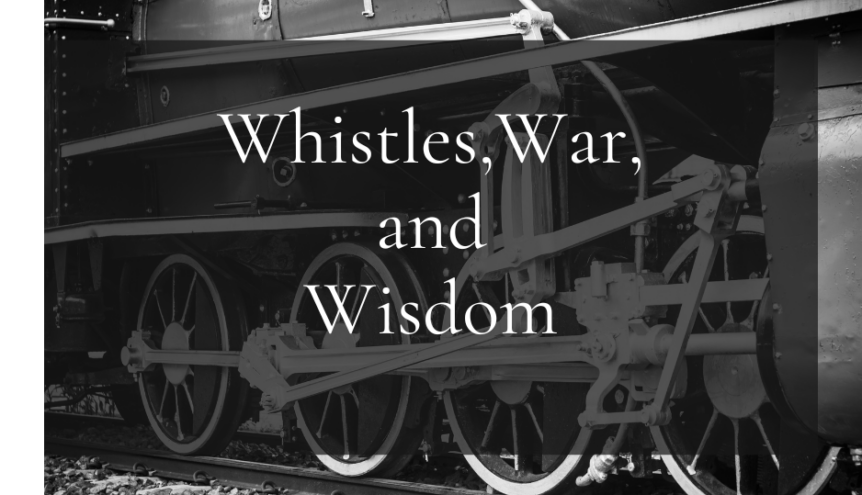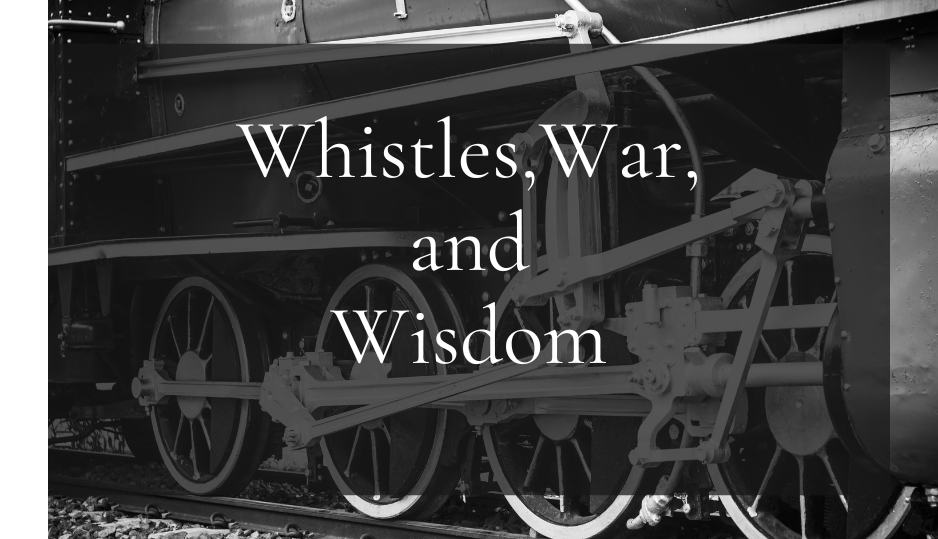 Quick note before I launch into the blog post. In case you missed last week’s blog, I’m doing a short series on trains in celebration of my newest novel, Train-Wrecked Hearts. I’m excited about this book for a couple of reasons. It’s the first in my new Norfolk Southern Series, and it’s also the first I’ve indie-published from start to finish. It will release on May 12th, but you can preorder the ebook now for the promotional price of only $2.99. The paperback won’t be available until the release.
Quick note before I launch into the blog post. In case you missed last week’s blog, I’m doing a short series on trains in celebration of my newest novel, Train-Wrecked Hearts. I’m excited about this book for a couple of reasons. It’s the first in my new Norfolk Southern Series, and it’s also the first I’ve indie-published from start to finish. It will release on May 12th, but you can preorder the ebook now for the promotional price of only $2.99. The paperback won’t be available until the release.
Now, moving on…
Several years ago, my husband planned a surprise trip for my birthday. Since we’re routine-oriented, creatures of habit, the idea of not knowing what awaited me was half the fun. For a couple of weeks, I daydreamed of exotic destinations with white beaches and plenty of sunshine (it was January, and I was winter-weary). Of course, we only had the weekend, but that didn’t limit my imagination.
I hadn’t expected an Amtrak train ride from Sacramento to Reno, an overnight stay, then back again. If you’ve never traveled in an observation car, it’s an experience of open, panoramic views and the time to enjoy them. We meandered through snow-covered mountains, giving me an appreciation for winter I rarely enjoy.
There have only been two other times I’ve ridden in a train. The first was as a leg of an Alaskan tour, and we traveled from Fairbanks to Denali National Park (again in an observation car). A bit more stunning than Sacramento to Reno. The second was on the Shinkansen (aka bullet train) in Japan when we visited our son in Tokyo in 2018.
Whether roaming through beautiful country or rocketing at upwards of 300 miles an hour, trains are a unique mode of transportation with a rich history.
In last week’s post, I promised some “whistle language,” which I’ll end with since I’m including a quick YouTube video. But before that, I want to share a few more facts I learned in my research.
Not only did time zones originate from trains (as I shared last week), but it’s also because of James Watt, a Scottish inventor, that we now have the term “horsepower.” Would you believe it got its start back in the 1760s?
Watt redesigned the original steam engine to improve its performance, and being a salesman, knew he needed a way to market it. He did some fancy calculations regarding the amount of work one horse could produce in a day and used it as a measure that he called “horsepower.” Although his estimations were exaggerated, his engines became the industry standard, led directly to the invention of the first steam locomotive, and the term stuck.
We might be able to link trains to the North winning the Civil War. President Lincoln was able to send 20,000 troops from Washington, D.C. to Georgia in just eleven days after the Battle of Chickamauga in September 1863. This fortification of the Union army was desperately needed, and although by today’s standards, eleven days is exceedingly slow, it was the longest and fastest troop movement of the 19th century.
It was also due to President Lincoln that train travel was publicized. Or to be more accurate, it was his assassination that achieved this feat. If you’ve ever watched old movies (or Agatha Christie’s Murder on the Orient Express) where passengers traveled by train, you might have seen sleeper cars—also known as Pullman cars—named for an engineer named George Pullman.
After a very uncomfortable train ride in upper-state New York, George Pullman (a self-trained engineer and builder) concocted the idea for a sleeping car. He started with two models—the Pioneer and the Springfield, named after President Lincoln’s hometown.
These cars were very comfortable but also pricy, and few railroad companies felt it was worth it to lease them. When President Lincoln was assassinated, the Pullman car was used as part of the cavalcade that traveled through Northern cities before returning his body to Illinois. George Pullman also loaned one of his beautiful cars to Lincoln’s grief-stricken widow, and the publicity changed railroad history.
After this, George Pullman created the Pullman Palace Car Company, revolutionizing train travel worldwide. When he died in 1897, would you believe his replacement as head of the company was President Lincoln’s oldest son, Robert Todd Lincoln? Talk about coincidence!
Although trains have been around for more than 200 years, the miles of tracks here in the United States reached their peak in 1916. In 1830, there were only 23 miles of railroad tracks. By 1850, that number grew to 9,000 as the U.S. government passed its first Railroad Grant Act to encourage people to settle in undeveloped parts of the country. That number increased to 30,000 by the beginning of the Civil War (most of them in the North). Many lobbyists and governmental officials wanted to create a railroad that could travel across the U.S.
If this at all piques your interest, my husband read a book he highly recommends on the race to build the transcontinental railroad, titled Nothing Like it in the World by Stephen E. Ambrose. The Amazon blurb reads, “The author chronicles the race to finish the transcontinental railroad in the 1860s and the exploits, sacrifices, triumphs and tragedies of the individuals that made it happen.”
By 1916, the number of railroad track miles was 250,000. According to my research on history.com, that’s enough to reach the moon from Earth. Crazy!
I could go on, and on, and on. Like I said in one of my recent posts, our friend Kenny Barnes gave me five thick books on the history of the railroad when I told him about this new series. The history of trains is not short on research if that’s something of interest to you.
One last tidbit I promised to share is the language of train whistles. Most are rather arbitrary, but there are a few with which you might be familiar. The one I hear most often in the middle of the night is two long, one short, one long. As a safety precaution, this whistle is required when a train passes a crossing. So, if nighttime whistles annoy you, don’t blame it on the conductor; he’s only doing his job.
If you’d like to know more, watch the quick video below. You might just find yourself listening more intently to train whistles than ever before.







